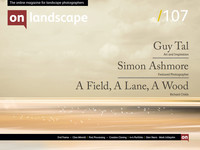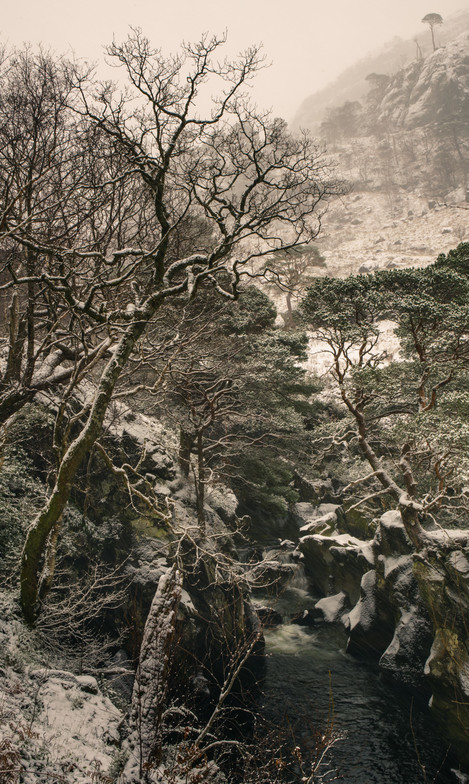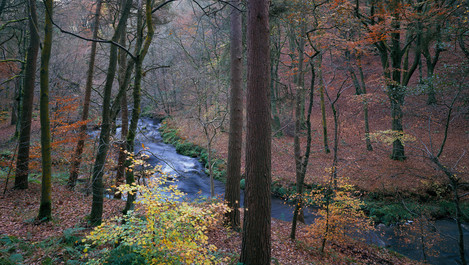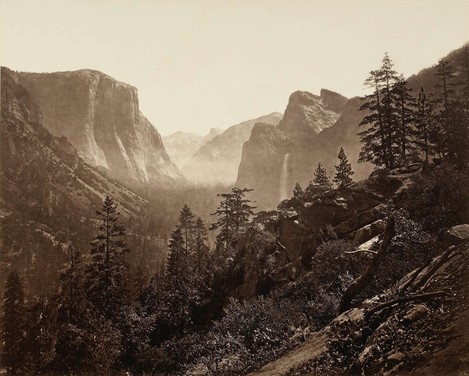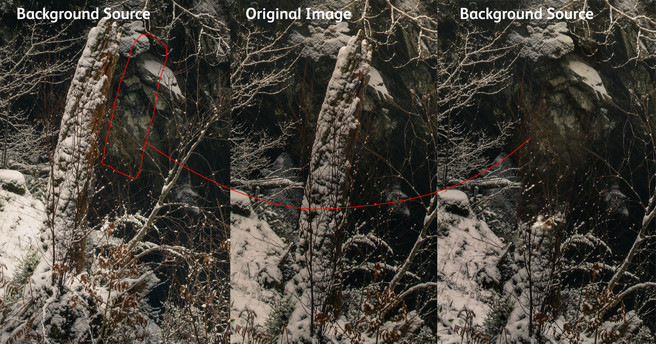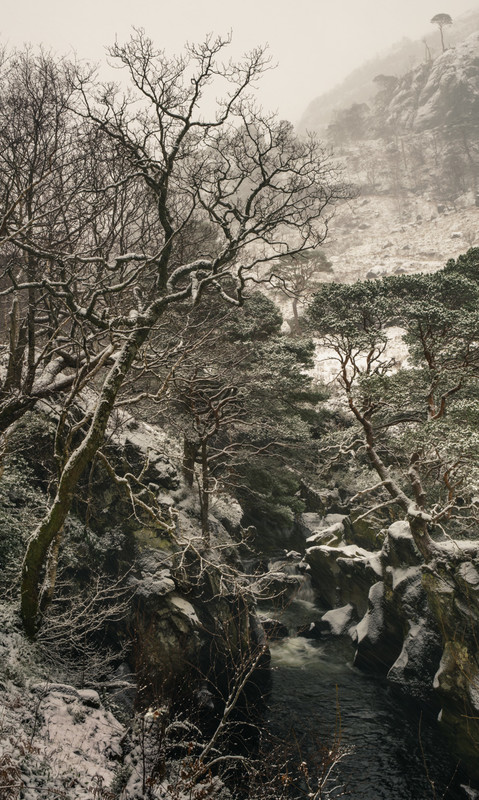Taking an extra image to use as a clone source

Tim Parkin
Amateur Photographer who plays with big cameras and film when in between digital photographs.
We’ve all been in the position of having what looks like a wonderful picture we can see but sadly there is an obstacle sitting in the way. For me it’s quite often the trunk of a tree sitting in the way as in the picture below. Now you’re probably thinking there are a few solutions to this.
- Don’t take the photograph
- Take the photograph anyway and live with the obstruction
- Chop the tree down
Not taking the photograph is probably the most obvious thing to do here but sometimes we feel compelled to try just a little harder. We could just take the photograph anyway, and this is something I’ve done this in the past and found it quite surprising that you can include a huge tree trunk in the middle of a photograph and have it still work. Here’s the example taken in Hardcastle Crags.
Chopping the tree down actually has a strong photographic heritage with Edweard Muybridge reportedly felling swathes of trees whilst working on his Yosemite images (see below). It's just a little frowned on I believe.
I’d like to think I’m a little bit more environmentally aware than Mr Muybridge and being as I really liked the scene I had glanced at in passing, I thought there might be a fourth way.
The tree was too big for me to be able to successfully clone out - I would have had to ‘create’ the area directly behind the tree from nothing.
However, if I moved to one side I could take a second shot of the area directly behind the tree and use it to replace the obstruction in my final image. You can see the idea in the image below where the middle shows the area of my image with the old tree trunk blocking part of the view. On the left I've moved to the right and taken an image which includes the area that was obstructed by the tree trunk. In the final image on the right you can see that I've copied the area from the offset image and used it to replace the tree trunk.
Before anyone says it, yes I would have to reject this image from the Classic View in Landscape Photographer of the Year and also from the Wildlife Photographer of the Year. It certainly isn't a "pure" capture but it's a little more environmentally friendly than Mr Muybridge would have it. And you can always enter something like this in the "Your View" section ;-)
Where do I sit as far as this image goes? For my own purposes it reveals the image that I could see quite clearly with my own eyes because our eyes have two 'cameras' attached automatically do this blending so it's not as far removed from my visual reality as it could be. I'd definitely feel like I had to mention the 'constructed' nature of the image were I to publish the photo though.
As to why I felt that I would have to mention it, I think I can refer to a photograph I saw in a recent landscape photography magazine that had used a "flood" plugin to add a fake watery reflection to the image. There was no mention of this in the image caption but as much as I thought the photographer was perfectly entitled to publish an image like this, I was also entitled to look at his other work with a little more incredulity that I had previously.
In other words, a little thought would be in the back of my head asking 'is this real? has it been p**shopped'. I wouldn't want other people to have that thought about my work and revealing my 'creative' editing like this is a small price to pay for that.
What is your take on such editing? Tell us in the comments section below.

